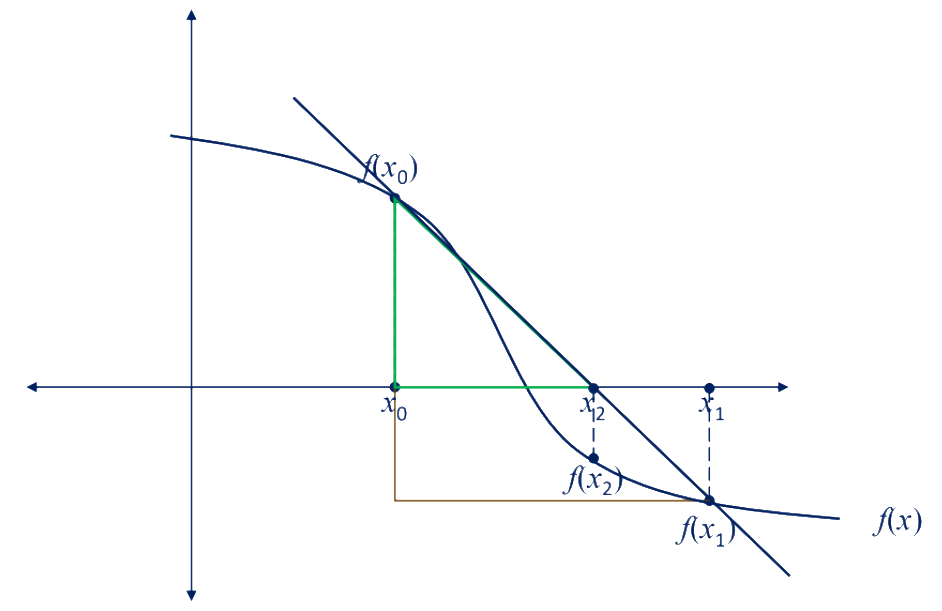Topics: Numerical Analysis
The false position method is a closed numerical method that tries to find the zeroes of a given function. This method is similar to the bisection method, with the only difference between them being the way we choose the middle point.
Procedure
To use this method, we first suppose that a zero of the function is between any two initial points and , chosen such that and are of opposite signs.
Next, we draw a line from to , and we call its intersection with the axis. In the same way we do for the bisection method, we will use and its relation to and to continue finding an approximation to the zero of the function.
That is, for the iterations that follow, if and have opposite signs, then we’ll set ; if not, then we’ll set .
How to find
Let’s first visualise the procedure for this method:
Notice that, with the help of the green and brown triangle in the above image, we can tell that:
…so by isolating , we get:
Similarities with the Bisection Method
Approximation and Stopping
Since this method works similarly to the bisection method, it also yields just an approximation to the real value, so we have to define a margin of tolerance before starting.
In the same way, we can use the same conditions we used for the bisection method for stopping this method.
Advantages and Disadvantages
The false position method has almost the same advantages and disadvantages as the bisection method, except for the fact that:
- Advantage: This method converges faster
- Disadvantage: The final interval is not always useful as an error bound
